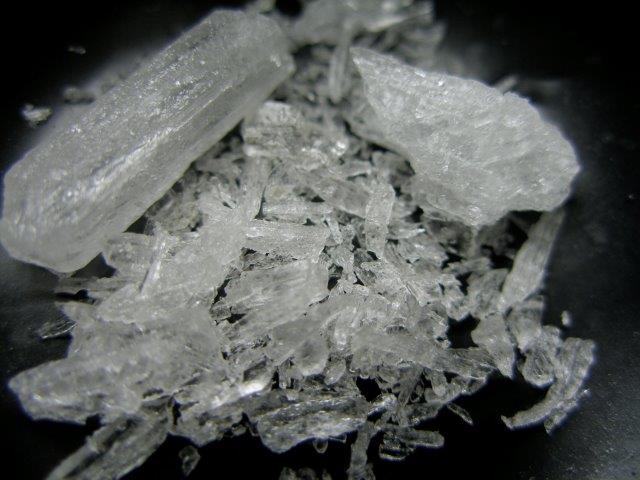A report by the National Ice Taskforce has concluded that mammoth seizures of methamphetamine have not dented supply or made the drug more expensive on the street.
The Taskforce’s report, released by the federal government on Sunday, made it clear that the best way to minimise harm from the potent drug ice – which around half methamphetamine addicts now choose – was to reduce demand by supporting addicts and their families with treatment and advice, rather than concentrating on ramping up law enforcement.
The drug’s addictive qualities and the fact it can be produced synthetically in Australian laboratories, as well as easily disguised and then imported, have created a particularly buoyant market which has so far been impervious to drug hauls and presents a golden opportunity for organised crime to flourish.
The report concluded: “Despite the efforts of law enforcement agencies, the market for ice remains strong. Ice is still easy to get and its price remains stable.
“The lack of any discernible market response to the efforts by Australian law enforcement agencies to prevent the supply of ice is greatly concerning.
“In most markets—legal or not—the significant shock to supply caused by a large seizure of product, should at the very least push up prices, particularly when demand is so strong. It is remarkable that despite very large seizures there has been no increase in the street price of the drug.”
The report states that law enforcement should be balanced (and perhaps, exceeded) by efforts to help addicts quit the drug and resist relapse, aid families with advice and support and equip frontline drug workers with the skills to engage with ice users and deal with aggressive behaviour.
It continued: “This means reducing the number of ice users by providing effective support to help current users quit and preventing people from starting to use the drug through well designed and targeted prevention activities.”
This includes making drugs to combat addiction available on the Medicare Benefits Schedule (MBS).
While drug experts and others working in the field have long thrown cold water on the hyperbole that normally accompanies most discussions and media reports about ice (variously described as a “scourge” and an “epidemic”) they also admit that the strength, addictive qualities and relative cheapness of the drug, as well as the cognitive distress it can cause, sets it apart from other narcotics.
The recommendations will be welcome news for experts working in the field, who have long called for better grassroots services for those struggling with ice addiction through rehab, cognitive behavioural therapy, detox, counselling and follow-up support, rather than employing the potentially counter-productive ‘shock and awe’ advertising campaigns and dob-in-a-dealer type of approaches favoured by Tony Abbott.
The Taskforce noted that: “Australia’s current treatment and support system is not particularly well designed to respond to ice use. Many services are designed for other types of drugs—for example, some detoxification services don’t cater well for the comedown associated with stimulants, and some services lack appropriate follow-up for the extended withdrawal period associated with ice.”
Residential services should prioritise disadvantaged users and those with other coexisting health issues, said the report, along with making more accessible and cost-effective counselling services available to ice users when they need it.
The Taskforce was also at pains to involve communities in tackling drug problems by letting them design the mix of treatment and support services locally, partly through existing programs like the Commonwealth’s Good Sports Programme, so as to avoid duplication.
It recommended that communities should also be supported to send strong messages against ice use and to work alongside police and other services to keep their communities safe. Improved education and realistic information about ice to discourage people from using in the first place, delivered, for example, through schools, is also encouraged.
The need for better data and research and regular, nationally consistent reporting is highlighted, in order to discern emerging trends and direct resources to priority areas.
The National Ice Taskforce was headed by former Victorian Police Chief Commissioner Ken Lay and its recommendations will feed into the National Ice Action Strategy, which will be discussed by Commonwealth and state and territory governments at the next COAG meeting.
Federal Government response to the report
The government has pledged what it claims is new funding of $300 million over four years to tackle the problem.
The largest amount – $241.5 million – will be spent on expanding treatment services and improving access to treatment, especially for rural, regional, remote and Indigenous communities. These services will be commissioned regionally by Primary Health Networks and include support and training for drug workers.
Other measures include:
• An additional $13 million for new MBS items for Addiction Medicine Specialists to increase the availability of treatment
• An additional $24.9 million to help families and communities via initiatives such as a new online information portal; up to 220 new Community Drug Action Teams and support for more than 1,200 community sporting clubs to deliver prevention messages
• Better evidence-based, targeted communication through the National Drugs Campaign, including enhancing school education programs
• An additional 18.8 million for better data and research, including a new Centre for Clinical Excellence for Emerging Drugs of Concern
• Around $16 million for law enforcement, directed to disrupting ice supply through enhanced intelligence and international cooperation
• The development of a National Criminal Intelligence System to improve intelligence sharing with state and territory partners.
Labor’s response
While Labor has welcomed funding being directed towards rehabilitation and strengthening the community response to ice, it called on the government to confirm that the new money would not be sourced from cuts to existing drug and alcohol programs.
The party criticised the government for causing funding chaos by announcing NGO treatment grants at the last minute this year and said it had also cut $800 million from Health Flexible Funds, including funds supporting alcohol and drug rehabilitation and treatment as well as prevention strategies.
Labor’s spokesperson for alcohol and other drugs policy, Stephen Jones, called on Prime Minister Malcolm Turnbull to listen to the experts.
“The release of the National Ice Taskforce report will no doubt prove uncomfortable reading for the Abbott-Turnbull Government,” Mr Jones said.
“The head of the Taskforce Ken Lay has stated that throwing more and more people in jail isn’t a real solution. We need to invest in treatment services, the very services that have been abandoned by an out-of-touch Liberal Government.”
David Feeney, Shadow Minister for Justice, said that despite increased drug seizures and arrests law enforcement had failed to halt the supply of ice.
“The wholesale price of ice has fallen over the past year in Australia,” Mr Feeney said. “That is why the Government needs to end their disdain for treatment services and enable a strong health-based approach to complement law enforcement efforts.”
Comment below to have your say on this story.
If you have a news story or tip-off, get in touch at editorial@governmentnews.com.au.
Sign up to the Government News newsletter


